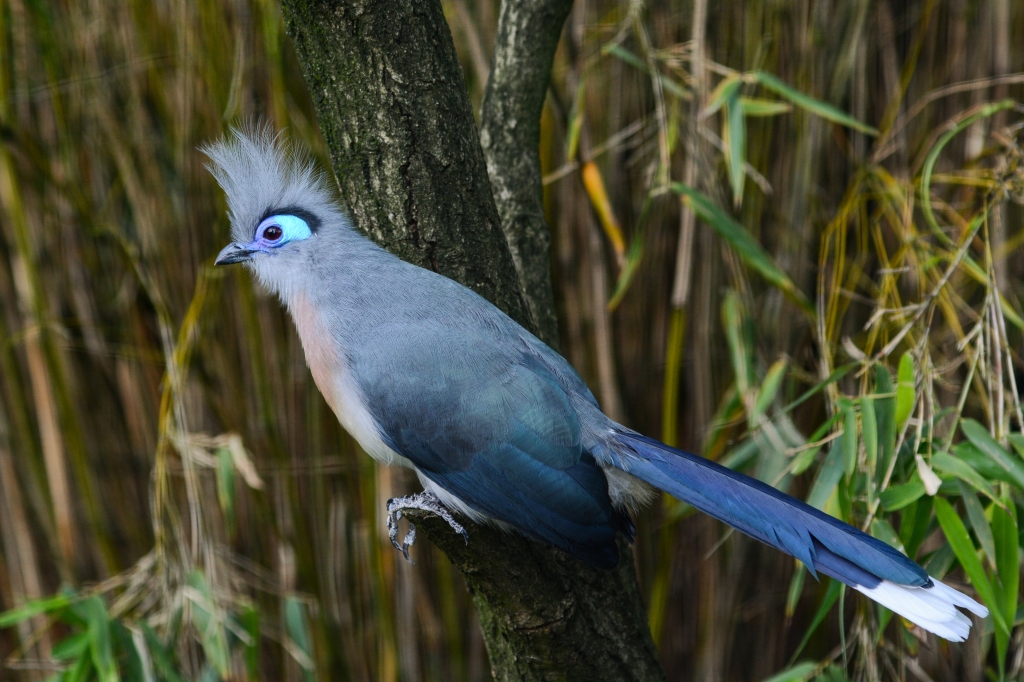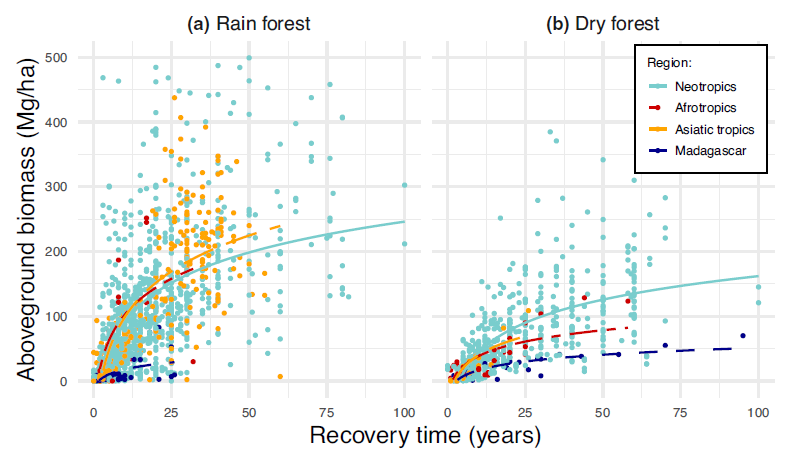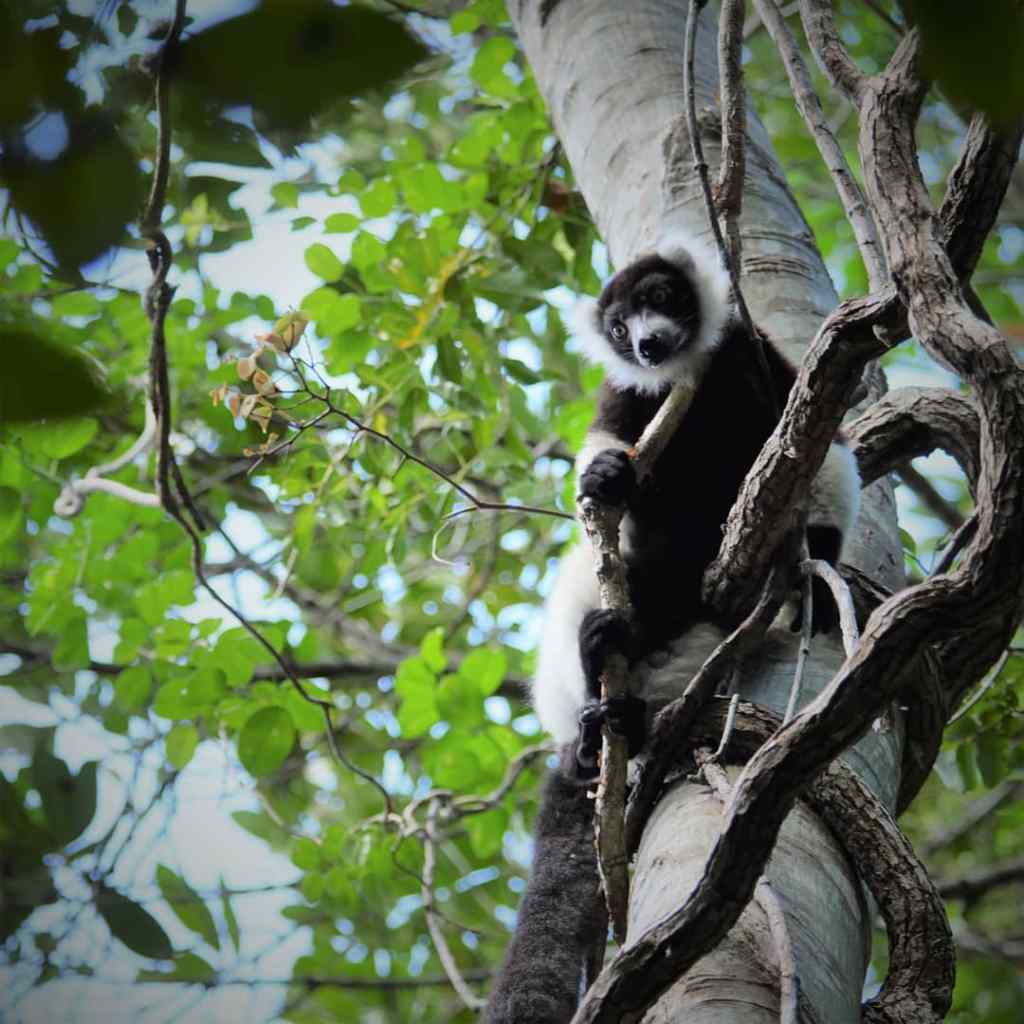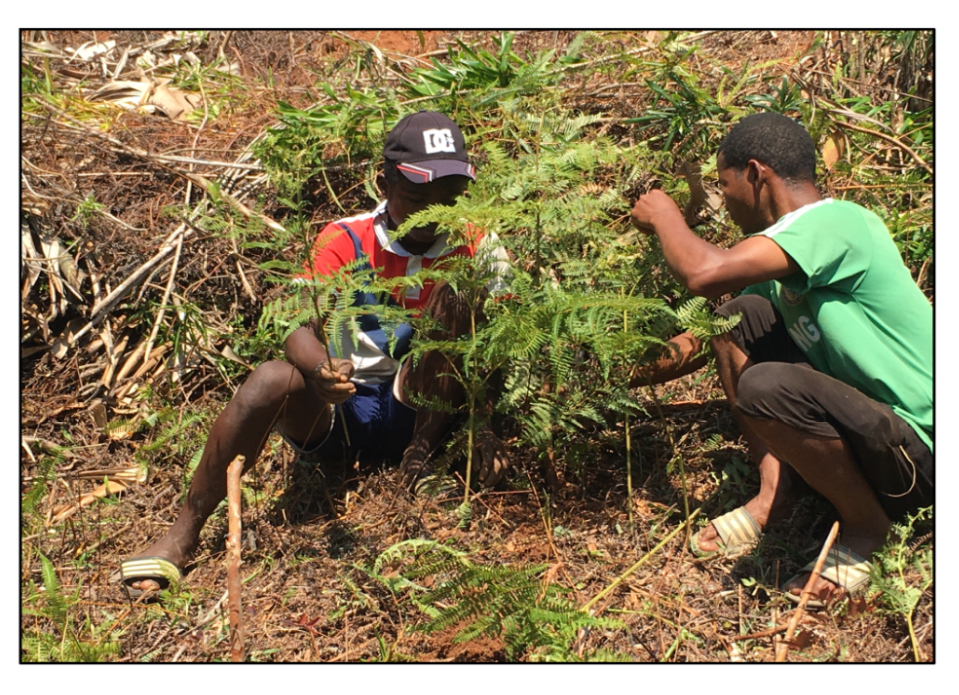Leighton Reid describes new research linking slow forest recovery to the ancient and protracted isolation that has made Madagascar a hotspot of global endemism – plus an example of working with local farmers to overcome these challenges and restore native rain forest.
Madagascar is a special place with a special history. Separated by ocean from Africa and India for the last 88 million years, this isolated tropical island has fostered the evolution of plants and animals found nowhere else on Earth. Lemurs, couas, and the plant family Sarcolaenaceae are all examples of organisms that evolved only in Madagascar. Collectively, such endemic species make up more than 80% of all plants and animals there.

Madagascar also has special problems. Almost half of the island’s forest has been cleared for agriculture since 1953, and remaining forests are at imminent risk. One recent study projected that if deforestation rates do not diminish soon, 93% of eastern Malagasy rain forest could be gone by 2070.
The combination of a large proportion of endemic species and a high degree of habitat loss makes Madagascar a biodiversity hotspot. Some people call Madagascar one of the hottest hotspots because its endemism and habitat loss are so extreme.
This week, a new study led by UC Berkeley PhD student Kat Culbertson identified another special problem in Madagascar: following disturbance, Malagasy forests recovery very slowly. Compared to other tropical forests around the world, Malagasy rain forests recover only about a quarter (26%) as much biomass in their first 20 years of recovery. Dry forests in Madagascar also recover more slowly, recovering just 35% as much biomass as American tropical dry forests over the same time period.

Why do Malagasy forests recover more slowly than forests in other regions? The answer may be related to Madagascar’s unusual evolutionary history. Culbertson and her co-authors developed four hypotheses and reviewed an array of scientific literature to evaluate support for each one.
Four ways that Madagascar’s unique history could lead to slow forest recovery
1. Native Malagasy forests lack resilience to shifting nutrient and fire regimes from current farming practices. Many rural people across Madagascar practice tavy, a farming method that involves clearing forest, burning it, and then growing rice – a staple crop. After one or a few years of growing rice, the land is allowed to recuperate for several years before it is cultivated again. In other tropical forest locations, such as southern Mexico where humans have farmed for thousands of years, similar practices can coexist with native forests, but Malagasy forests seem to have little resilience to tavy, as least at the intensity with which it is practiced today. For example, in eastern Madagascar, a 3-5 year tavy cycle can cause a native forest to transition to permanent herbaceous vegetation in just 20-40 years. The soil nutrient stocks in that fallow field may be as little as 1-6.5% of soil nutrients stocks in intact forest.
2. Madagascar is an island, and islands tend to have more problems with invasive species. Goats in the Galapagos, brown tree snakes in Guam, acacia in Hawaii, and rats everywhere – these are just some of the ways that island ecosystems have been overwhelmed and transformed by invasive species. Madagascar is no exception. Rain forest regeneration at Ranomafana is stalled by invasive guava, eucalyptus, and rose apple, while dry forest regeneration at Berenty is inhibited by a vine – Cissus quadrangularis. People in Madagascar have many more anecdotes about problems with invasive species like silver oak and Melaleuca quiquenervia, although the extent and impact of these invaders on forest recovery have not yet been studied.
3. Old, weathered soils have favored the evolution of slow-growing native plants. Madagascar is not only an island, it is a very old island, and as such its soils have been weathered and depleted of important nutrients like phosphorus. It’s hard to separate the effect of inherently low nutrient availability due to being an old island from the effect of human-induced nutrient scarcity through tavy, but one comparison of phosphorus content in rice stalks showed that phosphorus content was 10× lower in Madagascar compared to the rest of sub-Saharan Africa. If native trees have evolved to grow more slowly in Madagascar because of low nutrient availability, then on average exotic tree species should grow faster than native Malagasy ones in the same gardens. This has been shown in a few cases, but a more compelling analysis would need more species.
4. Finally, Malagasy forests have dysfunctional seed dispersal. One way in which Madagascar is different from other tropical areas is that by and large its trees have evolved to have their fruits dispersed by lemurs. Unfortunately, many of the lemurs that could disperse Malagasy tree fruits are either extinct or endangered – in many cases due to a combination of hunting and habitat loss. Moreover, the lemurs that remain are reluctant to venture outside of forest fragments (perhaps with good reason) and so they are unable to disperse seeds to regenerating farmlands that most need them.

In essence, the ancient and protracted isolation that has made Madagascar so unique has also made it uniquely vulnerable to contemporary changes like deforestation, fire, and agriculture. The result is an unfortunate combination: Madagascar not only has some of the highest deforestation rates, it is also one of the places least ecologically equipped to rebound from those disturbances.

The way forward – working with local people
Despite these challenges, Madagascar has committed to restoring four million hectares of lost habitat by 2030, an area nearly 7% the total national territory. This is a tall order in a country where technical difficulties are high and financial resources are often low, but it can be done, and the way forward, undoubtedly, is to work with local people.
One group that exemplifies bottom-up restoration is GreenAgain, a non-profit restoring native rain forest and supporting rural livelihoods in eastern Madagascar. GreenAgain is led and staffed by farmer-practitioners whose neighbors, family, and friends contract with GreenAgain to design, plant, and monitor diverse native forests on their lands. Last year, GreenAgain staff planted 20,000 trees across central eastern Madagascar, each one carried by hand, on foot, from one of eight regional tree nurseries. The rural farmers at GreenAgain collect rigorous data on tree survival and growth and collaborate with scientists to analyze and share the results of their tree planting experiments.
For example, one of the earliest experiments at GreenAgain was an assay of tree planting strategies intended to improve native tree seedling survival during plantings that occur in the dry season. Trees planted during the dry season typically have high mortality, sometimes in excess of 40%. One of the strategies that local farmers recommended to improve survival was to erect small teepees over each seedling using the leaves of a common fern, Dicranopteris linearis. These structures are temporary – they eventually dry out and blow away – but GreenAgain’s experiment showed that they reduced transplant shock (i.e., mortality in the first few weeks) by 75% compared to seedlings that were left to bake in the hot sun. In contrast, many of the other treatments had no discernable effect.
To analyze and publish these findings, GreenAgain partnered with an award-winning undergraduate researcher, Chris Logan, in my lab at Virginia Tech, who led a peer-reviewed paper that is now available at Restoration Ecology.

Could technological solutions like hydrogels or irrigation systems produce greater improvements in dry season tree survival? Yes – they probably could for a certain price, but homegrown solutions like fern leaf shade tents are free and easily accessible to any person doing restoration across eastern Madagascar. They are also more likely to be used because they were developed by local people.
This study also showed that some native tree species are much better at coping with dry season stress than other species, so another possible solution for dry season plantings could be to plant only the tough survivors. Once those trees survive and begin to produce shade, fern leaf tents may not even be needed anymore to help more sensitive native species survive and grow.
To read more about ongoing restoration and ecological research in Madagascar, read our new review of how Madagascar’s evolutionary history limits forest recovery and our new open-access paper about strategies for dry season plantings in eastern Madagascar.
If you are in a position to support the work of local farmers restoring rain forests in eastern Madagascar, consider donating to GreenAgain at their website, greenagainmadagascar.org.
Pingback: Critical (ecological) care in the land of the dodo: invasive species removal | Natural History of Ecological Restoration